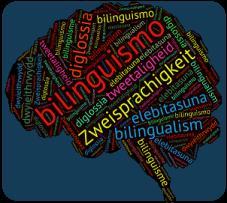Pliatsikas, C. (in press): Understanding structural plasticity in the bilingual brain: The Dynamic Restructuring Model
To access, click here
Abstract:
Research on the effects of bi-/multilingualism on brain structure has so far yielded variable patterns. Although it cannot be disputed that learning and using additional languages restructures grey (cortical, subcortical and cerebellar) and white matter in the brain, both increases and reductions in regional volume and diffusivity have been reported. This paper revisits the available evidence from simultaneous and sequential bilinguals, multilinguals, interpreters, bimodal bilinguals, children, patients and healthy older adults from the perspective of experience-based neuroplasticity. The Dynamic Restructuring Model (DRM) is then presented, a three-stage model accounting for, and reinterpreting, all the available evidence by proposing a time-course for the reported structural adaptations, and by suggesting that these adaptations are dynamic and depend on the quantity and quality of the language learning and switching experience. This is followed by suggestions for future directions for the emerging field of bilingualism-induced neuroplasticity.


